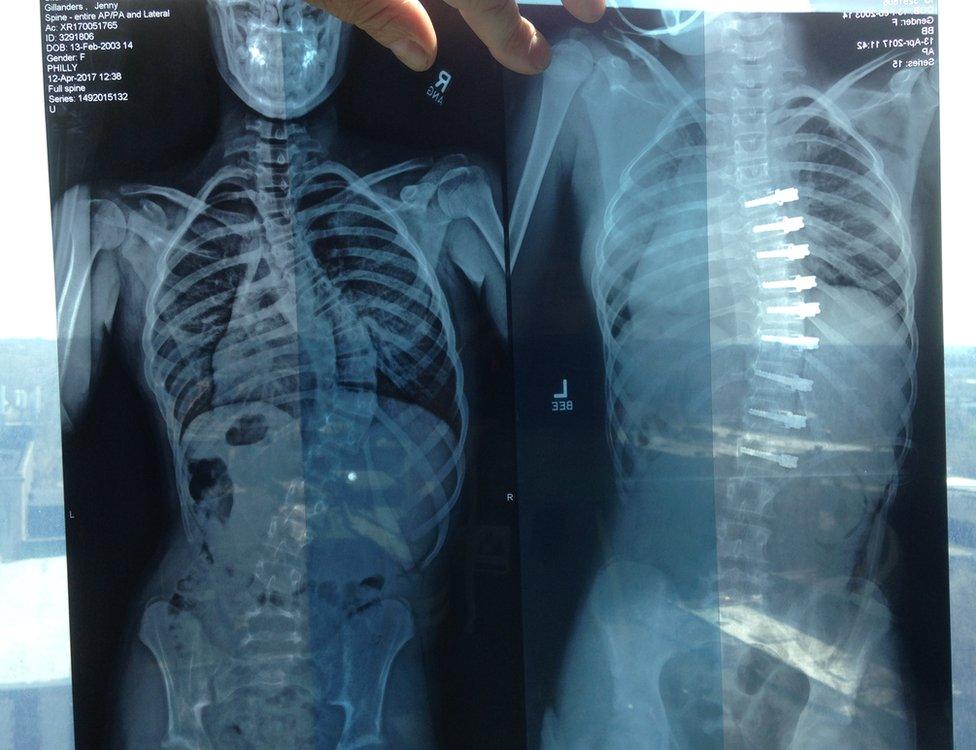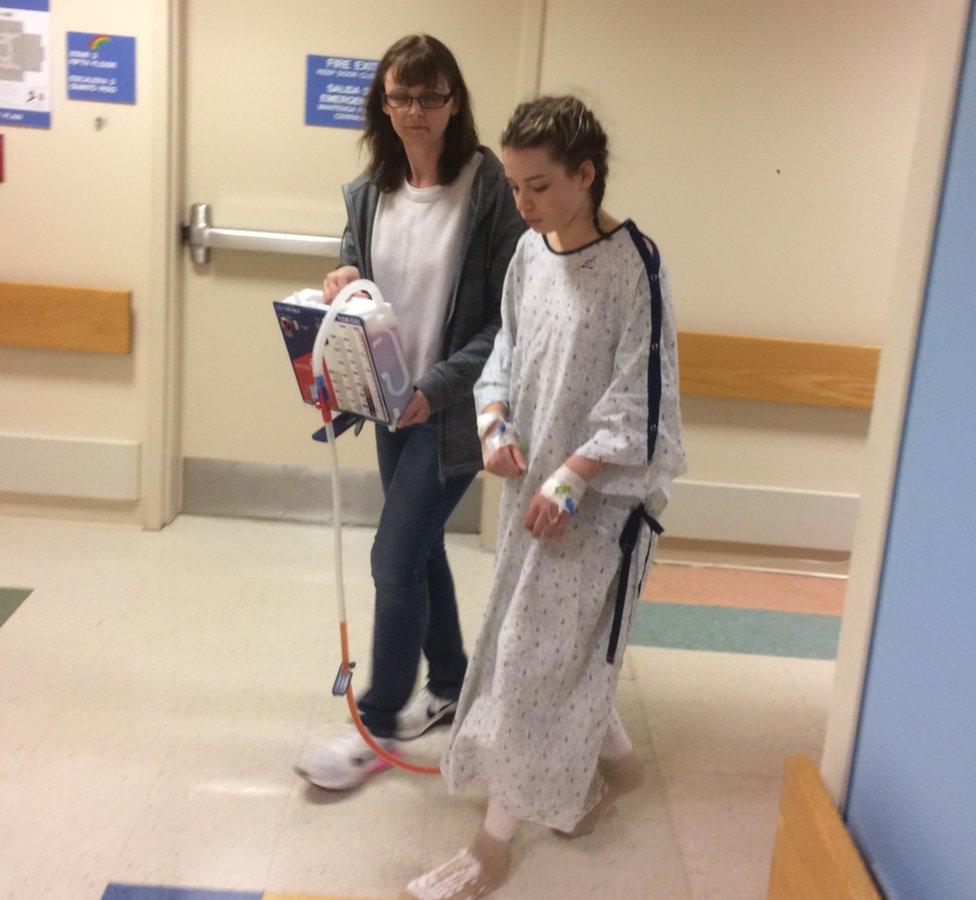Scottish surgeons want twisted spine operation approval
- Published

The x-rays show a spine before (left) and after (right) the operation
Surgeons in Edinburgh are hoping to become the first in the UK to provide a new technique to treat twisted spines in young people.
They have been to America to learn how to perform the operation on patients who have a condition called scoliosis.
It has had encouraging results and patients may soon be able to have it in Scotland rather than travelling 3,000 miles to Philadelphia.
The Edinburgh team said they had the skills but needed clinical approval.
Straightening of the spine
In the UK, about three in every 1,000 children need treatment for scoliosis, which is more common in females than males.
The Scottish National Spine Deformity Service (SNSDS), based at NHS Lothian, currently offers spinal fusion operations to patients whose curvature is not corrected by an external brace.
This involves using metal rods to produce a straightening of the spine.
The operation has been proven to correct the spine and prevent progression of the condition but it can limit flexibility and movement.
The new technique, Anterior Vertebral Body Tethering (AVBT), has been pioneered at the Shriners Hospitals for Children in Philadelphia.

Jenny Gillanders travelled from Scotland to Philadelphia for the operation
Enrique Garrido was one of the spinal surgeons from the Scottish National Spine Deformity Service who visited the hospital to see the procedure.
He told BBC Scotland: "This is, for the first time, a technique where we can control the spine, hopefully, and produce a gradual correction of the spine without a functionally limiting procedure, which is what a fusion operation is.
"It will be less invasive in terms of preserving some spine movement so producing a patient that is less aware of their of their limitations because of a stiffness in their spine."
Instead of metal rods, the US team puts in a flexible band and pegs to straighten the back.

The new technique involves a flexible band and pegs as an alternative to metal rods
Mr Garrido said: "This is the first time we have seen self-correction of the spine.
"So you inhibit growth on the one side of the spine so it will catch up and straighten out, sometimes to the extent it will over-correct and goes the other way."
He said the Edinburgh doctors already had the skills but health experts needed to decide whether it was the right procedure.
The absence of long-term results might make it difficult for the advisory body NICE (National Institute of Health and Care Excellence) to make a decision.

Jenny's story

Jenny Gillanders says her condition stops her running and affects her breathing
Jenny Gillanders is 14 and was diagnosed with scoliosis in September 2016.
Her spine was bent to 58 degrees.
Her family launched a crowd-funding page to help with the costs of sending her to the US for the new treatment.
On the website, Jenny said: "I am very sporty, I especially enjoy athletics. I have represented the East of Scotland and have won medals at national levels. I cannot run at the moment as my breathing is affected. I wear a painful back brace 20 hours a day to slow my spine curve. I now need a spinal operation to fix my back."
Before she left for the US, Jenny told BBC Scotland: "I'm excited because my back is getting fixed. I've had this problem for a long time and it's finally come.
"If it was a choice I would much rather be in Scotland so that my family could be around me and my friends but people have been very supportive."
Her mother, Lesley Gillanders, said: "It does frustrate you that it's not available here because we know that the surgeons are very capable in Edinburgh."

As soon as possible
Chris Adams, consultant spinal surgeon at the SNSDS, said: "The main advantage is still a theoretical one and it is about maintaining movement, which is incredibly attractive to the people we are trying to look after, which tend to be young, teenage, the majority of them girls.
"They tend to be active, doing dance and other things. "
He said: "What we want is to rapidly get to the stage where we could offer it.
"Patients under our care are already deciding to have this done but at some distance from their home and their extended families.
"We have the skill set here and we are about to get a fantastic new hospital in February next year and we want to get this established as quickly as possible."